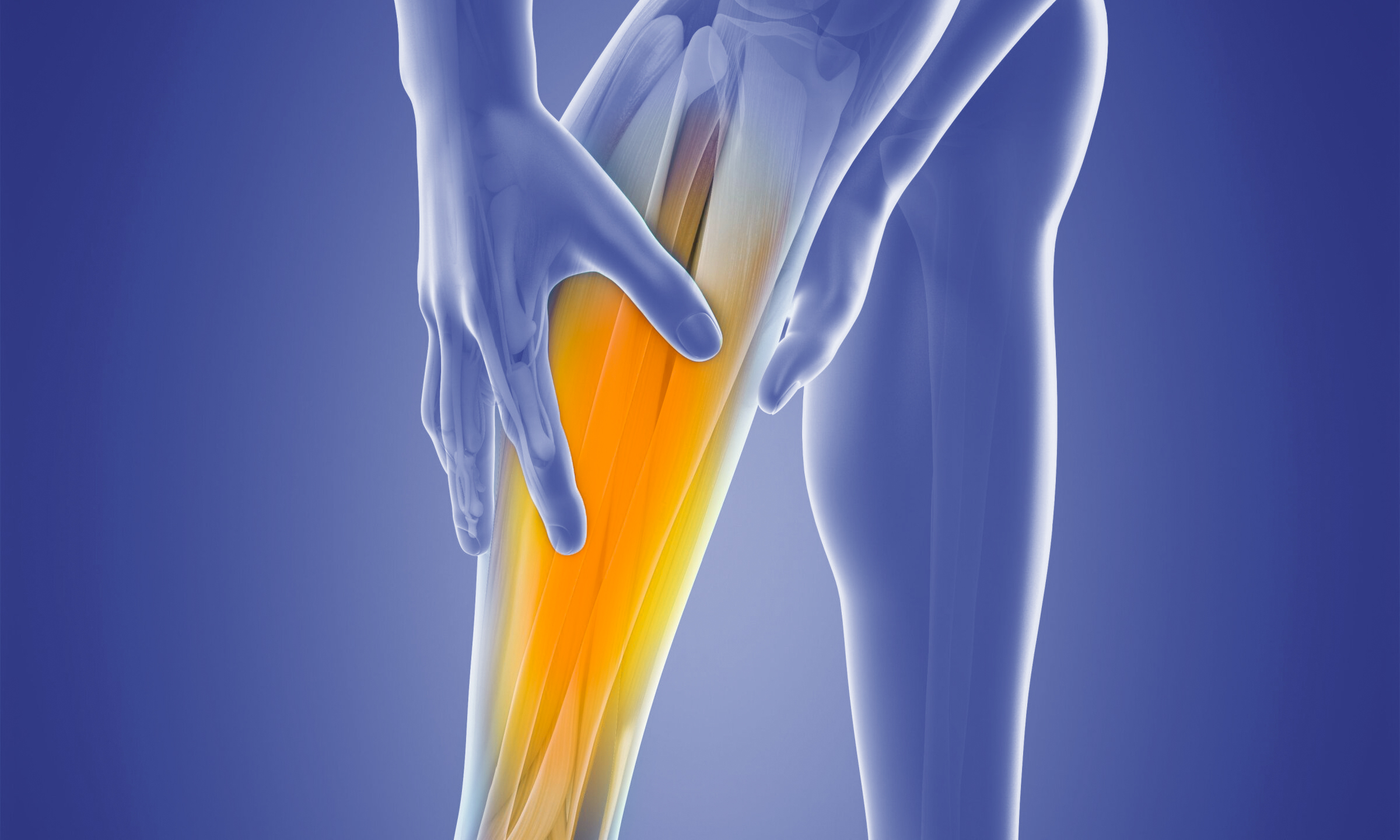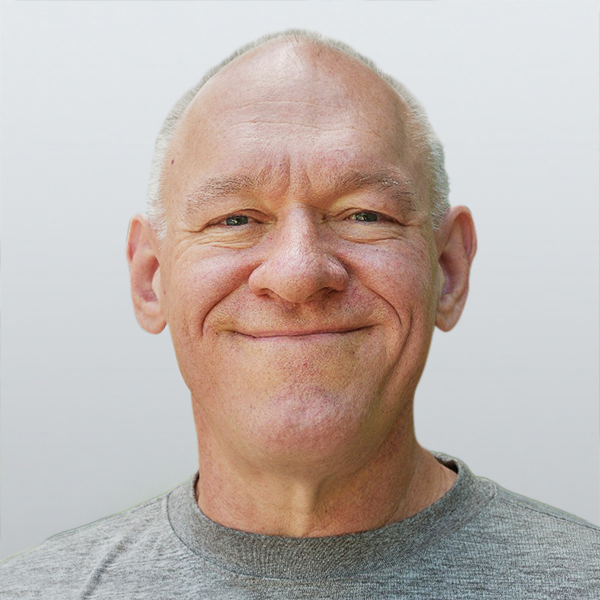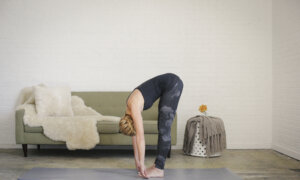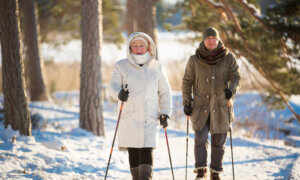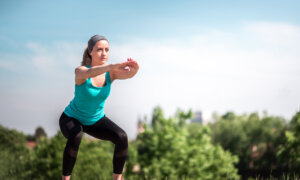Sarcopenia refers to an age-related decrease in muscle size and strength, which reduces physical performance overall. It is prevalent among older adults and often occurs due to inactivity resulting from limitations imposed by other diseases.
Some diseases, such as arthritis and chronic obstructive pulmonary disease, can significantly reduce physical activity, leading to a rapid decline in muscle mass and strength. This underscores the need to address these disease processes as part of a comprehensive approach to managing sarcopenia.
Fear plays a significant role in contributing to sarcopenia in older adults who are often keenly aware of their reduced balance and safety during daily activities. Older adults who have fallen often avoid certain tasks to prevent another fall or potential fracture. Falls not only result in physical pain but can also lead to serious consequences requiring hospitalization and rehabilitation.
The good news is that simple exercises can improve your muscle strength and function.
As always, these exercises have proven to be safe and effective for a substantial number of my patients, but you may wish to consult with your health care provider to ensure they’re right for you.
5 Exercises to Strengthen Weak Muscles
Be sure to engage your core muscles while performing these exercises to establish a stable foundation for your body.
1. Body-Weight Squats
Body-weight squats target the legs and gluteal muscles. Strong legs can help prevent falls.

(Chung I Ho/The Epoch Times)
Step 1: Stand with your arms by your sides and your feet shoulder-width apart.
Step 2: Slowly squat down until your knees reach a 90-degree angle while extending your arms straight out in front of you. Extending your arms will help keep you balanced and make this exercise more challenging. Be sure to push your hips back so your knees do not extend beyond your toes while squatting. This is critical for protecting your knees.
Step 3: Slowly stand back up, and try not to rush. Take about 1 to 2 seconds to move in both directions.
Step 4: This counts as 1 repetition. Try to perform 3 sets of 12 repetitions.
Body squats are an excellent way to maintain muscle mass and strength as you age.
2. Overhead Lifts
Overhead lifts incorporate elements of the standard squat and the overhead press, two of the “big five” compound lifts. Compound lifts are highly effective because they work multiple muscle groups at the same time.
These lifts focus on the quadriceps and gluteal muscles of the legs and the shoulder, upper back, and upper arm muscles. In short, they are easy to perform and offer a whole lot of goodness for the body. For this exercise, let’s use a single weight held in both hands to increase stability and control.

(Chung I Ho/The Epoch Times)
Step 1: Stand with your feet about a foot apart. To increase exercise intensity, place the weight on the floor in front of you or in a chair if you have a grumpy back. Be sure to use a weight you can reasonably manage; you can always move up to a heavier weight.
Step 2: Bend your knees and reach down to pick up the weight. Keep your back straight and avoid rounding your shoulders. Move your hips backward while bending to prevent your knees from extending in front of your toes.
Try to keep your feet flat on the floor and resist rising on your toes as you bend.
Step 3: Lift the weight straight over your head as you slowly stand. Take about 1 to 2 seconds to complete the movement.
Step 4: Slowly return the weight to the floor, again taking about 1 to 2 seconds.
Step 5: This counts as 1 repetition. Try to perform 3 sets of 12 repetitions.
This “breathless” exercise involves a lot of physical work, making it a personal favorite. It also offers the added benefit of improving balance.
3. Bird Dog Crunch
This exercise focuses on your core muscles and the muscles along your backline. It is a challenging, multipurpose exercise that can be performed almost anywhere.

(Chung I Ho/The Epoch Times)
Step 1: Position yourself on a supportive surface on your hands and knees, preferably with padding, to be nice to your knees.
Step 2: Slowly extend your left arm and right leg at the same time, keeping them straight until they are horizontal to the floor. This is the “bird dog” portion of the exercise. When extending your arms and legs, be sure to keep your back straight and your head up.
Step 3: Bend your elbow and knee simultaneously, bringing them toward each other until they touch. This is the “crunch” portion of the exercise.
Step 4: Return to the bird dog position and repeat the crunch movement.
Step 5: This counts as 1 repetition. Try to perform 3 sets of 30 repetitions per set. You can alternate from side to side or perform all sets on one side and then the other.
Be sure to keep your head up the entire time; trust me, the floor is still there, so you don’t have to waste time looking down at it.
4. Walking Lunge
The walking lunge is a great exercise for three reasons. First, it works your core and shoulders when you add weights. Lunging specifically targets your leg muscles. Lastly, it helps improve your balance and coordination. Although initially challenging, your body should quickly adapt.
Be sure to perform this movement in an area with enough space to allow you to move freely. You can plan to walk through the house to increase your walking distance.

(Chung I Ho/The Epoch Times)
Step 1: Stand with a weight in each hand.
Step 2: Take a large step forward with your right foot, about twice the length of your normal step.
Step 3: Squat down until your knees reach about a 45-degree angle of flexion, then stand back up. Step with your left foot and repeat the movement.
Step 4: This counts as 1 repetition. Try to perform 3 sets of 20 repetitions.
Be sure to maintain proper posture during this activity by keeping your shoulders up and your back straight while holding your head upright and facing forward.
5. Chair/Counter Pushups
Pushups are a classic exercise that can range from mild to wild. The traditional off-the-floor variety can be quite challenging and not readily available to everyone. Conversely,
wall pushups can be significantly easier, and almost anybody can perform them. I find that the chair and counter pushups bridge these two extremes.
Both regular push-ups and chair push-ups involve aspects of the traditional plank movement and can be quite challenging. Start where you can and work up from there. If you find that you can do more than the recommended number, just be sure you maintain an adequate pace and do not rush.

(Chung I Ho/The Epoch Times)
Step 1: Stand in front of a stable chair or counter with your feet approximately shoulder-width apart. Place your hands on the edge of the chair/counter, then move your feet back until your entire body is angled about 45 degrees to the floor. You should feel your body weight loading onto your hands. Your arms should be straight and fully extended.
Step 2: Keep your head up and slowly bend your elbows to lower your upper body toward the chair/counter. Take one full second to perform the movement. Hold for one second, then push back up until your arms are straight. Take approximately 1 to 2 seconds to perform the movement in both directions.
Step 3: This counts as 1 repetition. Try to perform 3 sets of 15 repetitions.
It should go without saying, but please don’t knock your head on anything. Kitchen sinks and cobras both tend to strike when you get too close.
If counter pushups are too easy, you can progress to chair pushups for more of a challenge.
Consistently doing these exercises can help you maintain strength and endurance and prevent age-related muscle weakness. From a clinical perspective, it’s easy to see the difference between those who consistently exercise and those who don’t. Exercise is one of the most valuable gifts you can give yourself as you age.





